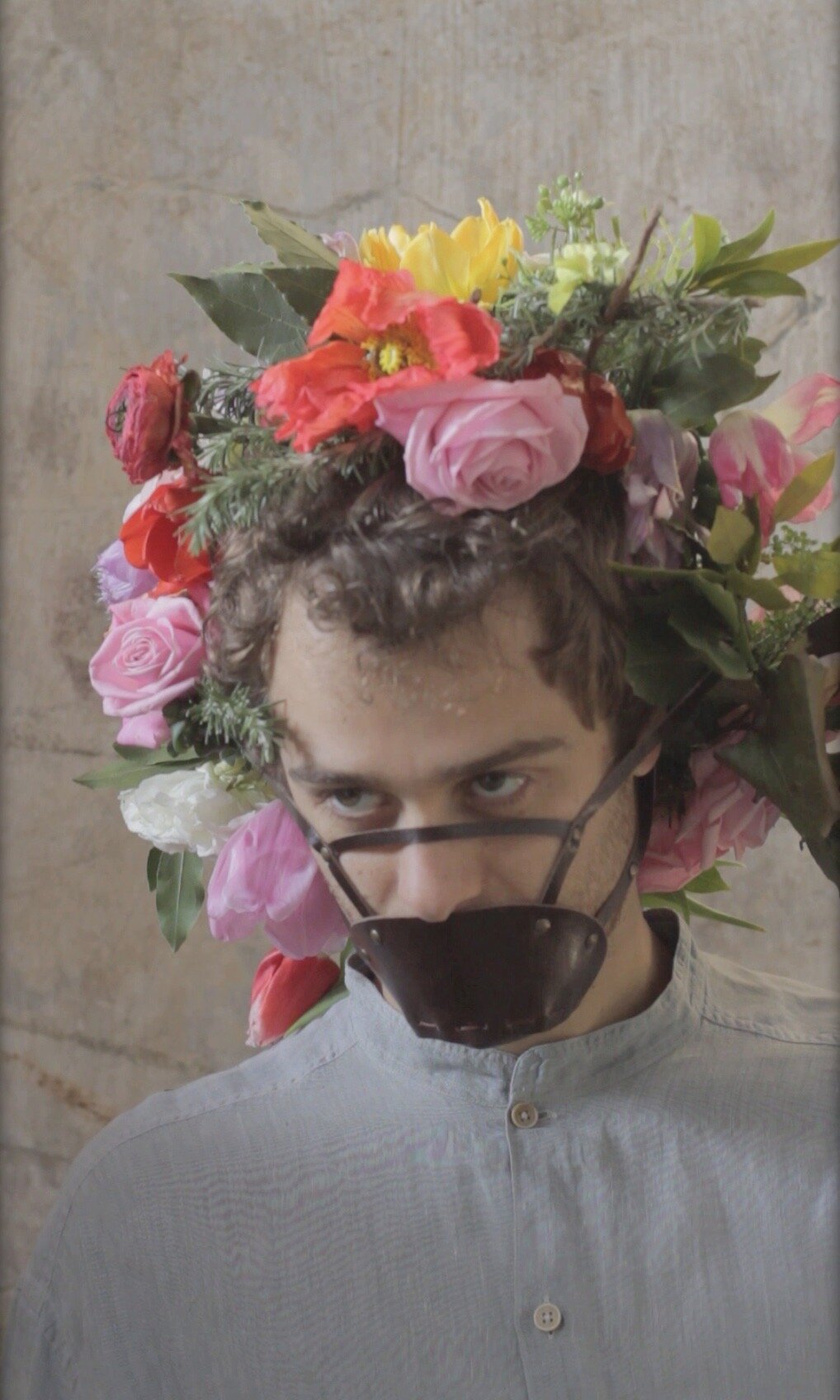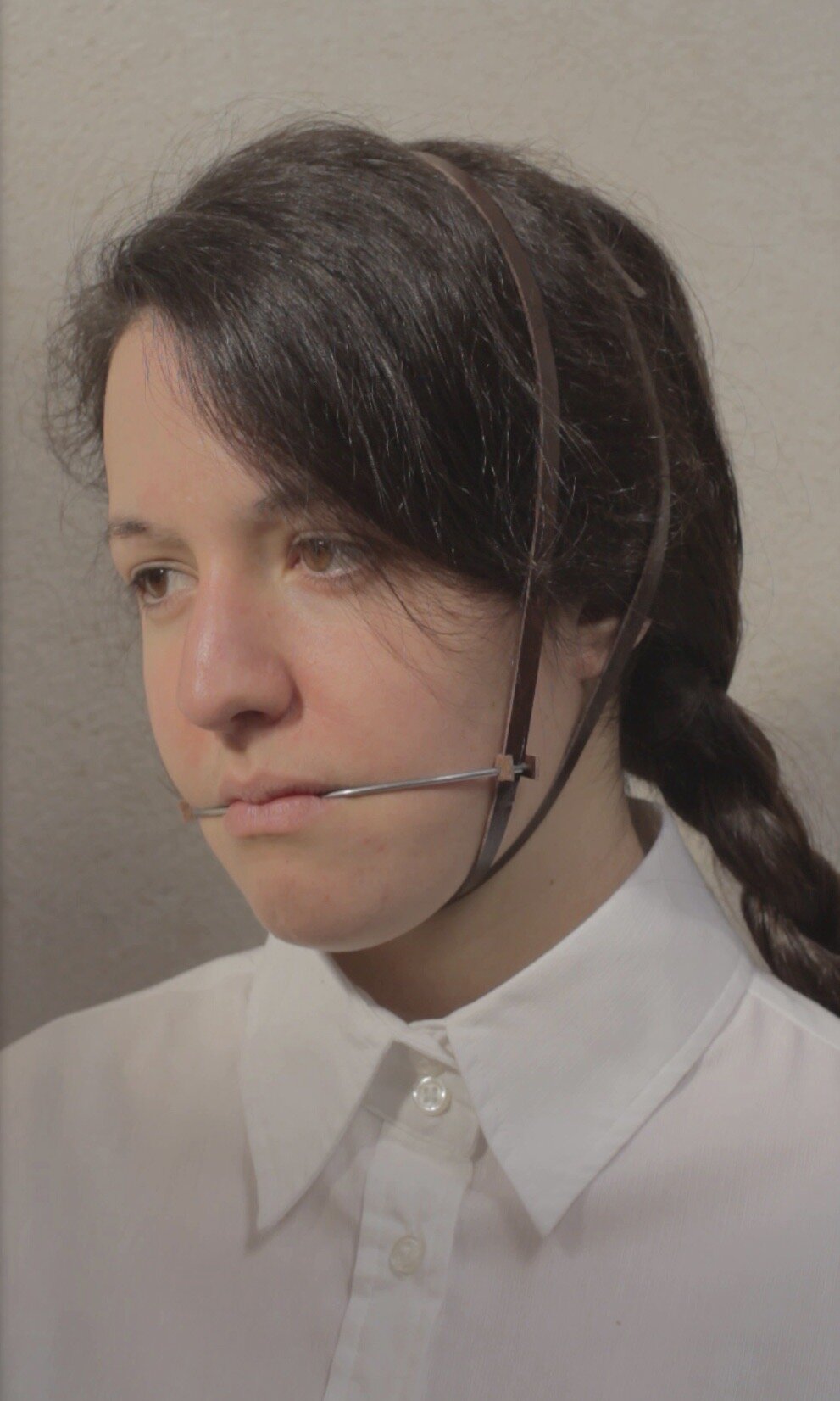

L.I., Lingua Imperii, è la lingua dell’impero inteso come dominio coercitivo. È la lingua povera, bruta ed ingannevole delle propagande fasciste. Sono gli alfabeti e le lingue insegnate a forza. Ma è anche il bavaglio o l’assenza di voce imposti come un dono violento dai dominatori. Infine è il linguaggio stesso della violenza. Ciò che ci sta a cuore sono i processi del ricordo attorno ad antiche odiose abitudini secondo le quali, nelle forme della caccia, alcuni uomini si sono fatti predatori di altri uomini e, ancora nel XX secolo, hanno intriso il suolo d’Europa del sangue di milioni di persone. Il Caucaso, limite estremo dell’Europa, confine geografico naturale, montagna delle lingue e intreccio fittissimo di popoli, labirinto che traccia e insieme confonde i confini, i limiti e le distinzioni, si ergerà come epicentro della memoria e luogo mitico di questo giudizio, così come nella poesia di Eschilo.
L.I., Lingua Imperii, is the language of the empire meant as coercive domination. It is the poor, brutish, deceitful language of the Nazi propaganda. It is the alphabets and the languages taught by force. But it is also a gag imposed as a violent gift by the rulers. Ultimately, it is the very language of violence. Here the core is the process of memory of those hideous old habits of men’s according to which in the past some of them have turned into predators of other men and, even as late as the twentieth century, soaked the soil of Europe with the blood of millions of people. The Caucasus —easternmost limit of Europe, natural boundary, Mountain of Languages (as it is sometimes known), inextricable tangle of ethnic groups, maze marking and confounding the boundaries at one and the same time— rises as the epicentre of memory and turns into a mythical place of this judgment, much like in Aeschylus’ poetry.
La forma teatrale scelta per questa creazione è quella del coro tragico dove il canto e la musica, il gesto e la visione totemica si intrecciano. Una piccola comunità di donne e uomini di diverse età tende la voce-dardo al confine tra il sussulto al cuore, il lamento e il sogno. Fa parte del coro una cantante di origine armena depositaria di un patrimonio musicale tradizionale antichissimo e vastissimo, e della memoria viva di un popolo offeso da un genocidio non dimenticato ma spesso ancora colpevolmente ignorato. Mentre su un grande schermo emerge il volto molteplice della vittima, su due schermi a cristalli liquidi laterali si consuma l’agone tra due ufficiali nazionalsocialisti campioni di pensieri divergenti.
The theatrical form chosen for this creation of ours is the tragic chorus where singing and music, gesture and totemic vision are closely intertwined. A small community of women and men of various ages shoot their voice-darts in between a jolt to the heart a lament and a dream. The chorus includes a singer of Armenian origin. She is a traditional custodian of an ancient and vast musical heritage, and living memory of a people who was wounded by an unforgotten —yet often shamefully ignored— genocide. As on the wide central screen the victim’s manifold face gradually emerges, on the two LCD side screens, a struggle unfolds between two Nazi officers, each championing opposing views of life.
“Pensava, forse a ragione, giudicate voi, che un essere umano è capace di uccidere senza rimorso solo quando macella il bestiame.”
Rifugio sicuro sin dal periodo della glaciazione dell’Eurasia, la regione del Caucaso è stata anche varco per viaggi, commerci e conquiste. Eppure, sebbene i poteri locali e quelli degli imperi che vi si affacciavano se ne siano per secoli contesi l’influenza, il Caucaso è rimasta una sacca protetta per popoli la cui identità è legata alle circa cinquanta lingue parlate. Tentativi operati in passato specialmente da parte dell’Unione Sovietica, di assimilare e dominare i Caucasici sono stati vani. La stessa caccia all’ebreo da parte dei nazifascisti trova nel Caucaso (come descritto con dovizia di documenti nel disturbante romanzo di Jonathan Littell Le Benevole) una sonora battuta d’arresto di fronte al labirinto di etnie, sovrapposizioni e sincretismi religiosi, consonanze linguistiche.
Safe haven since the last glacial period in Eurasia, the Caucasus region has also been a well-known passage for many travellers, traders and conquerors. Yet, although local powers and the adjoining empires have disputed its domination for centuries, the Caucasus has remained a secure shelter for peoples whose identity lies in the about fifty languages spoken in the area. The attempts that have been made so far, especially by the Soviet Union, to assimilate and dominate the Caucasians have all been in vain. As the author Jonathan Littell describes with a wealth of historical documents in his disturbing novel The Kindly Ones, the very hunt for Jews by the Nazi meets a resounding setback before the tangle of ethnic groups, the religious syncretism, the stratification of beliefs and the crossings of languages of the Caucasus.
Nel romanzo un giovane linguista tedesco, Leutnant Voss, ufficiale dell’esercito viene interpellato da una commissione militare che deve deliberare sulla presunta discendenza ebraica di alcune popolazioni montane e quindi sulla loro eventuale distruzione. La vertiginosa lista di lingue e dialetti parlati nell’area, restituita analiticamente e scientificamente da parte del giovane linguista (decisamente poco propenso ad allinearsi con il pensiero nazionalsocialista), e il suo meticoloso racconto di secoli di separazioni e insieme incroci storici e culturali tra popoli demoliscono, di fronte all’ufficiale SS incaricato di ottenere dal linguista la chiave scientifica per distinguere gli ebrei tra le popolazioni della montagna, i deboli castelli teorici di quella che lui chiama, con grande sdegno del commissario, una filosofia veterinaria delle razze, del volk e dell’originarietà. Tre dialoghi tra l’SS Hauptsturmführer Aue e il Leutnant Voss, ambientati tra la primavera del 1942 e l’autunno dello stesso anno nel corso delle operazioni di penetrazione dell’area caucasica da parte delle armate tedesche sul settore meridionale del fronte orientale, forniscono la spina dorsale attorno al quale ruota l’intero progetto teatrale.
In the novel the young German linguist Voss, who is serving as an SS officer, is asked by a military commission to provide scientific evidence of the alleged Jewish ancestry of some mountain people, the purpose of course being their complete annihilation. But the fancy theoretical castles in the air of the commission come crashing down when faced by brute fact. The young linguist, definitely unwilling to align with Nazi ideology, delivers –with scientific precision and consistency– a dizzying survey of languages and dialects and a comprehensive account of the centuries of separations and intersections between the peoples in the area. Much to the indignation of the SS officer in charge of the commission, the linguist dismisses the Nazi theory of race, Volk and the purported “nativeness” of the Germanic tribes as veterinary philosophy. The backbone of the entire project is provided by three dialogues between the SS Hauptsturmführer Aue and Leutnant Voss, set between the spring of 1942 and the autumn of that year during the operations of penetration in the Caucasian region by the German Forces in the southern sector of the Eastern Front.

ANAGOOR
L.I. LINGUA IMPERII
with
Anna Bragagnolo, Moreno Callegari, Viviana Callegari, Marco Crosato, Paola Dallan, Marco Menegoni, Gayanée Movsisyan, Alessandro Nardo, Monica Tonietto
and with
Hannes Perkmann, Hauptsturmbannführer Aue
Benno Steinegger, Leutnant Voss
voice-over
Silvija Stipanov, Marta Cerovecki, Gayanée Movsisian, Yasha Young, Laurence Heintz
translation & language consulting
Filippo Tassetto
costumes
Simone Derai, Serena Bussolaro, Silvia Bragagnolo
sound design
Mauro Martinuz
original score
Paola Dallan, Mauro Martinuz, Simone Derai, Marco Menegoni, Gayanée Movsisyan, Monica Tonietto
non original score
Komitas Vardapet, armenian traditional and folk music
video
Moreno Callegari, Simone Derai, Marco Menegoni
drammaturgy
Simone Derai e Patrizia Vercesi
direction
Simone Derai
production Anagoor 2012
Trento Film Festival, Provincia Autonoma di Trento, Centrale Fies, Operaestate Festival
With the support of
APAP Network Culture Programme of European Union
Produced with the assistance of
Fondazione Cassa di Risparmio di Trento e Rovereto
Anagoor is part of the Fies Factory project
Artist-in-residence programmes
SC - Culture of change | University of Zagreb - Student centre | Zagreb, HR
Tanzfabrik | Berlin, D
Conservatoire de Strasbourg | Strasbourg, F
photographic credits / promotional pictures
Simone Derai
photographic credits / live pictures
Andrea Macchia
photographic credits / video stills
Simone Derai, Moreno Callegari, Marco Menegoni
trailers editing
Simone Derai
















